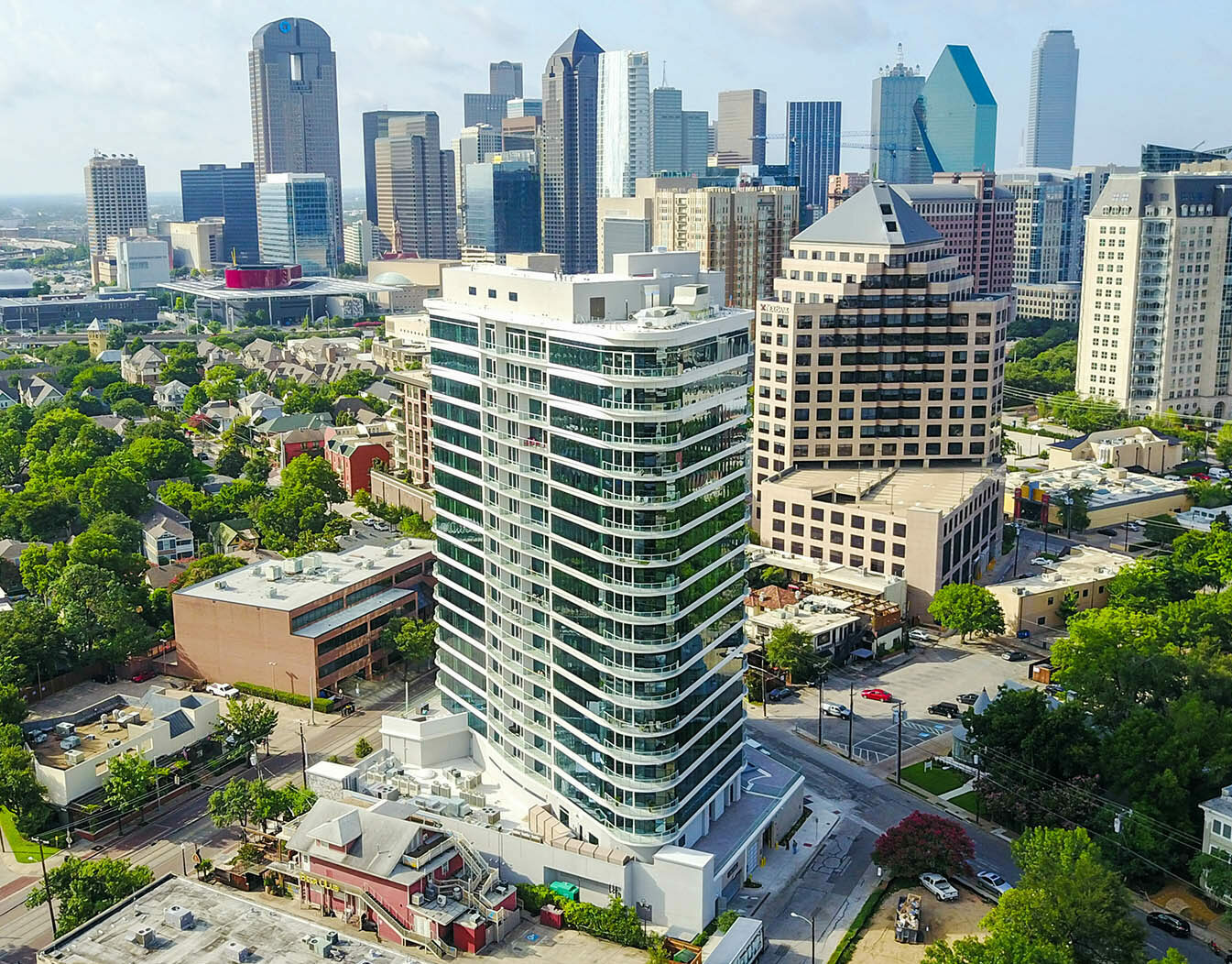How Deep is Dallas’ Luxury Rental Pool?
D Magazine | S. Holland Murphy | June 30, 2016
Much has been made about the thousands of out-of-towners swarming North Texas, particularly the California transplants snatching up homes north of Dallas with hefty cash offers. But there’s a group of high-rise apartment developers who would love to feel more of the housing market’s heat blow their way as competition stacks up.
The number of high-rise apartments, defined as a building seven stories or higher, is likely reaching a peak this coming year. According to Axiometrics, a Dallas-based firm that analyzes the apartment market, the Dallas metro area saw six high-rise apartments built in 2015, a dozen more will be finished in 2016, and a whopping 30 high-rise apartments are expected to complete construction next year.
“There are plenty of people moving to the area, but the question is, are there enough jobs being created with salaries that can afford these high-price-point apartments?” says Stephanie McCleskey, Axiometrics’ vice president of research.
Nearly all of the city’s high-rise apartments built in the past two years are priced at more than $2 per square foot, with Uptown apartments the Brady (18 stories, 299 units) and The Jordan (23 stories, 212 units) coming in closer to $3 per square foot. The Jordan’s most budget-friendly option is a 735-square-foot one-bedroom at $1,925 per month, and the priciest penthouse is 2,262 square feet at $13,335 per month.
There’s a good reason why these centrally located rents are so steep. “The sites that are available [to be developed] tend to be pretty small, maybe an acre, so that constraint dictates going up,” says apartment industry analyst Ron Witten. Going up to high-rise level, explains Witten, means builders have to erect a steel-frame structure as opposed to a more affordable wood frame. The cost of high-rise materials and a shortage of skilled labor have driven up construction costs. Thus, high-dollar rents and a lingering question without an answer—yet.
“Nobody really knows how deep the market is for that luxury high-rise product,” Witten says. “The only way we’ll find out—and we will find out—is whether all these units lease or not without having to give away a lot of concessions or cut the rents.”
A year from now, Witten says, Dallas should have some firm answers. In the meantime, developers are asking themselves the same questions.
“Can people afford the rents for these high-rises? Of course I ask myself that!” says Doug Chesnut, CEO of StreetLights Residential, a company responsible for a number of recent high-rises, including the aforementioned Jordan, plus three apartment towers currently under construction. “I don’t think it’s an unlimited universe, but I also think it’s a different universe than what we were looking at 10 years ago.”
When Chesnut was building in Uptown a decade ago, most residents were under the age of 30. Since opening The Jordan in March, he says, 54 percent of the building’s leases are going to residents aged 40 and older. He likes this demographic. They’ve owned houses before. They have nest eggs. They don’t bail if they lose their jobs.
As of the end of May, more than half of The Jordan’s 212 units are leased, right on track with new developments in the area, according to Axiometrics’ research. But soon the $65 million Jordan will face more competition. Less than half a mile away, One Uptown will offer $75 million worth of luxury living when it opens at the end of the year. This includes two pools, one atop the 20-story tower for residents only and the other on the building’s second floor, Dallas’ first structural glass-bottom pool.
“We stepped up our building for finishes and amenities, and with the two world-class restaurants going in, it’s going to be unlike anything else,” says Rick Cavenaugh, president of One Uptown’s development firm, Stoneleigh Companies. “So we feel pretty good at the top of the food pyramid.”
But like looking into that glass-bottom pool, it’s hard to tell how deep the luxury rental market will go—until you jump.

